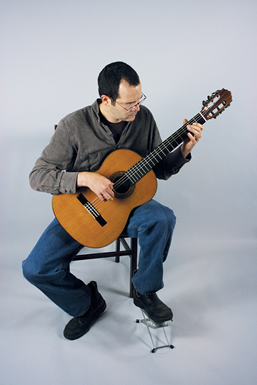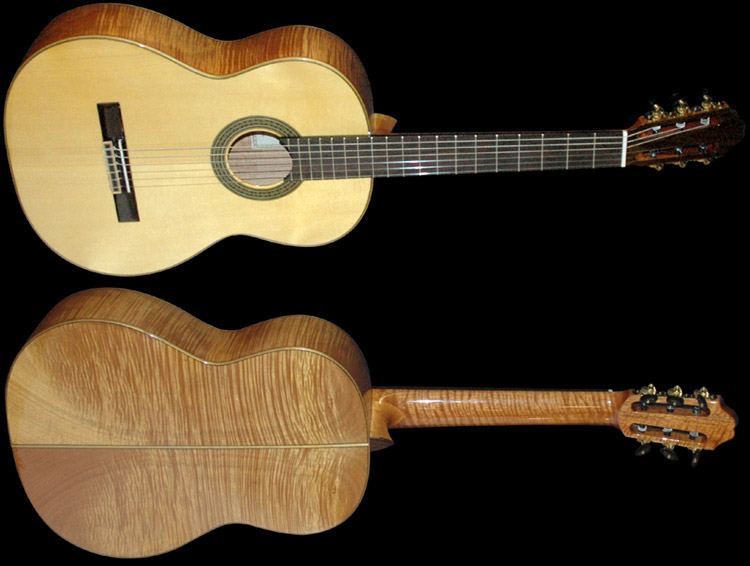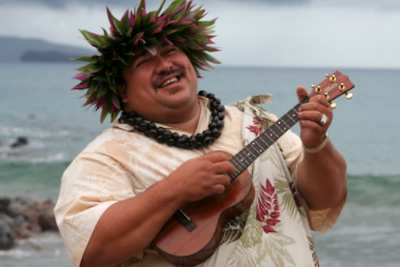Tecniques
The modern classical guitar is usually played in a seated position, with the instrument resting on the left lap - and the left foot placed on a footstool. Alternatively - if a footstool is not used - a guitar support can be placed between the guitar and the left lap (the support usually attaches to the instrument's side with suction cups). (There are of course exceptions, with some performers choosing to hold the instrument another way.)
Plucking of the string
Right-handed players use the fingers of the right hand to pluck the strings, with the thumb plucking from the top of a string downwards and the other fingers plucking from the bottom of string upwards. The little finger in classical technique as it evolved in the 20th century is used only to ride along with the ring finger without striking the strings and to thus physiologically facilitate the ring finger's motion. Some modern guitarists, such as Štepán Rak, use the little finger independently, compensating for the little finger's shortness by maintaining an extremely long fingernail. In contrast, Flamenco technique, and classical compositions evoking Flamenco, employ the little finger semi-independently in the Flamenco four-finger rasgueado, that rapid strumming of the string by the fingers in reverse order employing the back of the fingernail—a familiar characteristic of Flamenco.
Direct contact with strings
As with other plucked instruments (such as the lute), the musician directly touches the strings (usually plucking) to produce the sound. This has important consequences: Different tone/timbre (of a single note) can be produced by plucking the string in different manners and in different positions.



